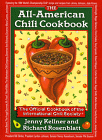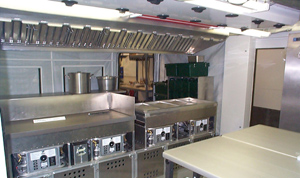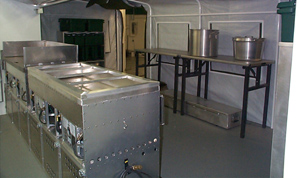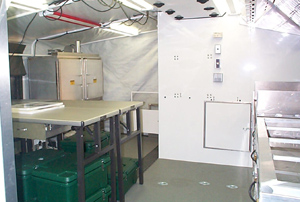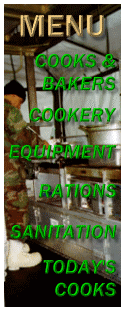
More Cooked Meals
Containerized Kitchen
Exceeds Army’s Standard for Field Feeding
Serving hot meals will be easier for Army cooks as they enter a new era of field food service with the Containerized Kitchen.
|
|
|
The Containerized Kitchen will replace the Mobile Kitchen Trailer that was introduced in 1975. The new kitchen gives cooks the capability to roast, grill, boil, fry and bake. In testing, the Containerized Kitchen enabled cooks to feed more than 650 soldiers three meals per day. |
Developed by Product Manager-Soldier Support at the U.S. Army Soldier Systems Center (Natick), the Containerized Kitchen (CK) is the first field kitchen to be introduced into the Army inventory since the Mobile Kitchen Trailer (MKT) in 1975, according to Bob Bernazzani, project officer for the CK.
“We’ve significantly improved the working environment for the cooks,” he said. “We’ve made it much closer to cooking in a garrison environment.”
“This is a really big step for us,” said Maj. Al Majewski, combat developer at the U.S. Combined Arms Support Command at Fort Lee, Va. “The MKT was supposed to be an interim solution for a field kitchen. The problem is that it costs a lot of money to build a new kitchen. Here we have a huge capability increase at a small cost increase.”
The kitchen is part of the Army’s commitment to providing soldiers nutritious meals in garrison and the field. Hot, cook-prepared meals have been a luxury. At the beginning of Operation Desert Shield/Desert Storm, troops mostly ate Meals, Ready-to-Eat (MREs) and only ate an occasional cooked meal.
Although the Army standard in the field is two cooked meals and one MRE per day, the CK meets the Army’s goal of three cook-prepared meals per day.
The CK also has shown in testing to be capable of feeding far more than the 550-soldier standard. By comparison, the MKT is capable of feeding 250 soldiers one hot meal per day.
“In the latest field test in April, we easily fed an average of 650 soldiers three times a day,” Bernazzani said. “Based on that, the Army is now looking to increase the capacity to 800.”
Instead of eating MREs, soldiers will be able to eat hot meals either with the Unitized Group Ration Type A, which includes fresh food ingredients, or Heat and Serve tray packs. Both are configured for ease of ordering and distribution.
Unlike the MKT, the CK has running water for food and beverage preparation, and for hand washing. It can roast, grill, boil, fry and bake. It has a refrigerator, 60 cubic feet of storage space for perishable foods, a warming rack, an integrated lighting system with blackout lights, a climate control system, and venting for cooking and burner by-products. The serving line also is protected from inclement weather.
The kitchen is also durable. It’s capable of operating in temperatures ranging from 25 below zero to 120 degrees F.
Heat to cook the food is provided by the Modern Burner Unit, making it the first new system fielded with the MBU as the primary energy source, according to Bernazzani. The MBU uses JP-8 fuel instead of gasoline and is in line with the military’s goal of using a single battlefield fuel.
“Cooks don’t have to leave the kitchen to start the old M-2 burner and then bring it inside. They don’t have the hassle of no running water or sink,” he said.
“It’s much safer and easier to use,” Majewski said. “Cooks love not having to get up an hour earlier to prep their burners.”
CKs will be used at battalion-level meal preparation sites, but are also available for other selected units in remote locations. Food is served and prepared to most of the troops at the preparation site, but rations can be sent in insulated food containers to soldiers in remote areas.The CK uses existing military items such as generators and field feeding equipment in addition to integrated commercial refrigerators and sinks.
|
|
|
Modern Burner Units replace M-2 Burners in the Containerized Kitchen. Running water, a climate control system and venting are some features that are similar to a garrison kitchen. |
Equipment is interchangeable on the CK’s four burners, allowing cooks maximum flexibility. The kitchen is stored in an expandable commercial 8-foot by 8-foot by 20-foot steel container mounted on a trailer and pulled by the latest Family of Medium Tactical Vehicle 5-ton truck. The kitchen can be transported by ship, rail or air.
“We’ve improved the ability to transport a field kitchen to the theater. In testing, it successfully traveled every three days to simulate movement in combat,” Bernazzani said.
The kitchen stays on the trailer in the field and is powered by a tactically-quiet generator. In a garrison, the kitchen can be placed on the ground and operated with a generator or electricity from an outlet.
|
|
|
A refrigerator and 60 cubic feet of storage space for perishable foods help cooks prepare for a heavy work load. |
Thorough operational and developmental testing has shown that the CK meets or exceeds expectations, he said.
The CK replaces two MKTs and takes 45 minutes to set up vs. 30 minutes needed per MKT.
No additional soldiers or extra training are necessary to operate the kitchen.
The first unit is scheduled for production in August. At least 240 kitchens will be fielded, with the first shipment destined for Fort Bragg, N.C. in March 2001, Bernazzani said.
This article is from the July/August 2000 edition of The Warrior.
July 2000
| Bulletin Board | Keyword Search |
| Bookstore | Links |
| About Us | Recent Additions |
![]()

